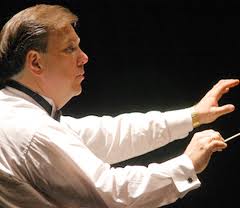|
Symphony
FROM THE NEW WORLD TO THE OLD WORLD
by Peter Lert
Saturday, June 14, 2025
Chamber
MC2 DUO RECITAL CLOSES 222'S SEASON
by Terry McNeill
Saturday, June 14, 2025
Choral and Vocal
CANTIAMO SONOMA'S LUSCIOUS A CAPELLA SINGING IN SEASON ENDING CONCERT
by Pamela Hicks Gailey
Sunday, June 8, 2025
Symphony
SRS SEASON ENDS WITH RESOUNDING TA-TA-TA-BANG
by Terry McNeill
Sunday, June 1, 2025
Symphony
YOUTHFUL VIRTUOSITY ON DISPLAY AT USO'S MAY CONCERTS
by Peter Lert
Saturday, May 17, 2025
Symphony
MYSTICAL PLANETS AND LIVELY GERSHWIN ORTIZ AT FINAL SRS CONCERT
by Peter Lert
Sunday, May 4, 2025
Symphony
VSO'S CONCERT MUSIC OF TIME, MUSIC OF PLACE
by Peter Lert
Sunday, April 27, 2025
VOCAL ELEGANCE AND FIRE AT THE 222'S RECITAL APRIL 26
by Pamela Hicks Gailey
Saturday, April 26, 2025
CANTIAMO SONOMA SINGS AN INSPIRED GOOD FRIDAY MOZART REQUIEM CONCERT
by Pamela Hicks Gailey
Friday, April 18, 2025
DRAMATIC SHOSTAKOVICH SYMPHONY CLOSES PHILHARMONIC'S 25TH SEASON
by Terry McNeill
Sunday, April 13, 2025
|
 |
 Conductor Les Pfutzenreuter |
VIENNESE CHARM WITHOUT THE WALTZES
by Earl Dixon
Sunday, October 6, 2013
The Ukiah Symphony opened its 2013-2014 season in their home city’s SPACE Theater Oct. 5-6 with a program of music that originated in Vienna. Never one to go in for the stereotypical, conductor Les Pfutzenreuter sidestepped any material from Strauss and in fact none of the pieces were waltzes. The program instead focused on an earlier period in Viennese music making, which seemed to be to the liking of the full capacity audience.
The Sunday program opened with Mozart’s “Don Giovanni” Overture, and the Symphony showed it was eager and excited about the new season. The piece was performed with enthusiasm and flair under Mr. Pfutzenreuter’s crisp and concise baton. Continuing with a work from Mozart’s Vienna period, the Sinfonia Concertante for Winds (K. 297b), had three movements: Allegro con brio, Adagio and Andante con variazioni.
The Allegro was well-played but it seemed to take on an interminable quality. This impression may have been enhanced by the afternoon’s warm and humid weather that lent stuffiness to the air. Theater personnel quickly applied some air conditioning to refresh flagging audience members, but it took a while to have effect. Perhaps the nature of the composition itself was a factor, as the Allegro tempo seemed to be appropriate at the beginning of the piece, but any “con brio” quality seemed to be absent by mid-point. Given the brief but stifling conditions in the theater, this is almost excusable.
The Adagio was a pleasant surprise: rich and warm, the piece successfully transporting the listener to another time and place, and was played movingly and with palpable feeling. In the variations the quartet of soloists were Beth Aiken, oboe; clarinetist Eric Van Dyke; Ann Hubbard, bassoon; and hornist Ben Robinson. This group particularly excelled in presenting a balanced and intricate four-part counterpoint. The acoustic quality of the theater is good and the artists clearly took advantage of it to listen attentively to one another. During solo moments, Ms. Hubbard demonstrated an impressive command of her instrument.
Following Intermission the Symphony returned to present a rousing rendition of Mozart’s Overture to “The Marriage of Figaro” that drew enthusiastic applause.
Beethoven’s first Symphony in C Major (Op. 21) completed the program. The first movement, Adagio molto-Allegro con brio, was well –played and since fresh air was vented into the theater, the “con brio” was now evident. The second movement, Andante cantabile con moto, was performed both “with motion” and with sensitivity to dynamics and reflected well on Mr. Pfutzenreuter’s rehearsal technique, as well as on the discipline and focus of the musicians.
The third movement, Menuetto: Allegro molto e vivace, and the finale, Adagio-Allegro molto e vivace, were deftly performed. The string section seemed to have lost accurate intonation in the Menuetto, having admirably maintained pitch up to this point. But this was a minor distraction, and in the finale there was no evidence of difficulty, and the program concluded with energy and gusto.
|
